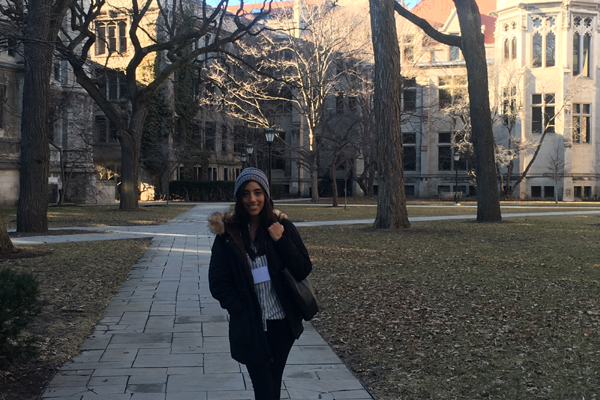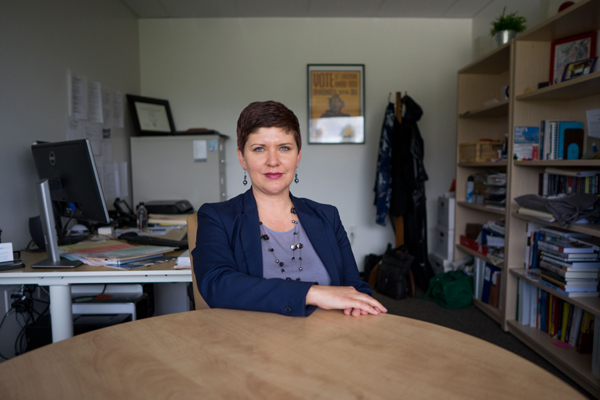
The annual Spartans Supporting Spartans campaign encourages the SJSU community to donate to campus programs. Last year’s campaign raised $87,000. (Photo: David Schmitz)
By Lesley Seacrist
Did you get a chance to enjoy one of the “Moveable Coffee Breaks” during this year’s Spartans Supporting Spartans campaign?
The popular pop-up coffee stops — offering free drinks, food and giveaways —are a signature part of the annual eight-week campaign, which rallies San Jose State University faculty and staff to donate to campus programs.
The last coffee break of 2018 was April 12 in the student union but faculty and staff still have time to donate or become involved, according to co-chairs of the Spartan Supporting Spartans campaign Lisa Francesca, a communications specialist with the College of Engineering, and Amy D’Anna, a marketing coordinator for the College of International and Extended Studies.
During last year’s campaign, the committee helped to raise $87,000 through one-time gifts and payroll deductions to help with a variety of campus initiatives, including scholarships for students. In addition to the donations to the annual campaign, committee members sold raffle tickets for $1 each or six for $5 with a grand prize of a dedicated campus parking spot. The team raised $2,000 for the SJSU Student Hunger Fund. The raffle this year will benefit the SJSU Student Crisis Fund, which helps students who are faced with challenges from unexpected circumstances such as flooding, fire or other emergencies.
In past years, one of the groups that had the highest participation rate was Facilities Development and Operations custodial staff.
“We had a 5 a.m. coffee break to celebrate their generosity,” D’Anna said. “Examples like this put things into perspective.”
Francesca initially was inspired to help the SJSU Student Hunger Fund. She soon discovered Spartans from across campus coming together to make a difference.
“Our very name says a huge amount about coming together to help the students regardless of position or title,” Francesca said.
D’Anna also noticed an increased camaraderie between coworkers during the campaign.
“It’s not just a place where you work, but a community of people that will help you along your journey,” D’Anna said.
This is D’Anna’s third year participating on the committee and first year as co-chair. After seeing the generosity of staff and faculty, she’s been inspired to also become a contributor, even as a full-time student herself in the School of Journalism and Mass Communications, where she is set to graduate this semester.
Both Francesca and D’Anna are passionate about connecting and communicating donor stories, and both were surprised to learn that creating a campus of caring has an impact on outside donations, too.
“Outside donors look at gifts and pledges made by faculty and staff,” Francesca said. “It’s not only about helping our students and creating a bond within the community, but positioning ourselves in the donor community.”
Donations for the 2018 Spartan supporting Spartans Campaign can be made via the campaign website.



